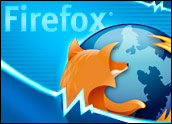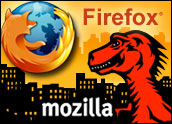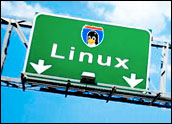
The battle between Microsoft- and Linux-based servers just got a new twist. It is spelled N-O-V-E-L-L. While many IT managers are still arguing about which platform is fundamentally better, Novell is hoping to generate a buzz around its new Open Enterprise Server system.
Open Enterprise Server is a Linux-based alternative to Microsoft Windows Server 2003. Novell is hitting security debaters right between the eyes with its touted characteristics.
For example, McAfee recently announced new versions of its LinuxShield and NetShield for Open Enterprise server, the latest versions of SuSE Linux Enterprise server-based operating systems, and Novell NetWare.
Apparently Novell has done something right. Microsoft lashed out at the company in a press release that announced it, along with its partner Quest Software, has successfully migrated more than 1.5 million Novell NetWare users to Microsoft Windows Server 2003. And so another round of the platform battles begins.
Setting all of the media hype and tit-for-tat attacks aside, what are enterprise IT managers really getting their hands on when the choose a Windows-based sever platform? And what can they really expect when they buy into a Linux-based server platform? Those questions spark a familiar debate about Linux and Microsoft.
Is it a Difficult Decision?
Chuck Stevenson, CTO for Gupta Technologies, a provider of embedded relational databases, told LinuxInsider there are three top considerations when choosing any server platform: initial cost, long-term costs and ongoing maintenance, and longevity.
Making a decision between Microsoft and Linux, then, boils down to defining your business requirements and needs. Is your primary objective security, improved performance, software compatibility or cost? Or is it purpose-driven, such as a database server platform, file server or general server?
Before you even look at the differences between Linux and Microsoft servers, you should know what you hope to find so you’ll recognize the best option when you see it.
“Both Microsoft Windows and Linux have strengths and weaknesses when compared against each other, the best practice is to identify your business or technical problem and match the solution to the problem,” Stevenson said. “In the future we will begin seeing more environments with both Microsoft Windows and Linux servers allowing customers to use best of breed based on their specific needs and budgets.”
The Distinguishable Differences
What are the distinguishable differences in plain English? It can be difficult to get techies to set aside their personal biases and explain the two platforms in barebones English. But Stevenson gave it a try.
He said Linux offers some compelling advantages. It tends to run well even on minimally configured hardware, which in business terms means you can leverage your existing hardware investment and get better performance than the currently installed Windows NT operating system.
For example, Stevenson said Linux server operating systems cost less to purchase up front, so this adds to the initial costs savings. Linux has a much better security history than Microsoft and if security is your number one pain point, he added, Linux may be the better choice.
“Linux is particularly suited to specific purpose solutions, such as running a Web server like Apache, or running your firewall software,” Stevenson said. “It is a very high performance file server and integrates reasonably well with other systems such as Microsoft operating systems using SAMBA or other integration software.
However, Stevenson said if you need to run a lot of Microsoft software like MS Exchange, or Microsoft Web server, then Linux would not be a good choice.
Looking Under Linux’s Hood
Evan Blomquist, co-author of Linux for Dummies, told LinuxInsider that Novell Enterprise Server is based on commodity software and can never be “shelved.”
“Even if Novell tanks in it’s efforts, having made the transition to open source will allow a business to continue development and operation since it’s based on free/open source software,” Blomquist said. “It’s just a matter of finding and training service and support staff.”
Though the issue of security is hotly debated, Blomquist falls on the side of Linux. He said the stability and security of enterprise Linux has been proven time and again to be superior to Microsoft.
“Proprietary software is like a car with the hood welded shut, as long as it runs you’re fine, but you’re held hostage to the software vendor for fixes and enhancements,” Blomquist said. “Again, Novell Enterprise Server is based on open source. … Anyone with the proper skill set can alter it — not just Novell.”
Blomquist also noted that Linux has scaled the kernel to service 32 processors while Windows can only safely handle four. His conclusion is that fundamental architectural differences render Linux more efficient: “Linux is a ‘best-of-breed’ Unix. … Unix has been in the high-end server market decades longer than Microsoft has been in business.”
Managing Costs
Microsoft Windows tends to be more expensive initially — and when it comes to long-term costs and ongoing maintenance Microsoft does have a history of security flaws that require frequent patching.
Sometimes those patches break existing services, such as e-mail, Web services or other applications running on the server. However, there is strong compatibility between products written to run on the Microsoft platform.
“Your MS Exchange mail server will run without much effort as well as MS Web server. If all your other servers and clients are running versions of Microsoft’s operating systems, integration is much easier to facilitate and manage over time,” Stevenson said.
“Customers will likely receive a high level of support from Microsoft in addressing upgrades. There is plenty of documentation such as best practices white papers on migration, installations and tuning activities.”
In the end, Stevenson said Microsoft offers a high level of confidence that all your existing “stuff” will continue to work with your new Microsoft Sever. This in itself could be worth the additional hard-costs you incur up front for some IT managers.
Gazing at Windows
Blomquist said IT managers are tired of the upgrade treadmill — and as long as Microsoft continues to base its revenue model on selling widgets, the company will be pressed to sell, re-sell, and upgrade existing products. Novell, he said, has caught the vision and is basing revenue on services and support.
“When you run software that stores your precious business data in proprietary file formats, who really owns your data?” Blomquist asks. “The mantra used to be, ‘No one ever got fired for buying IBM.’ The culture these days is that no one gets fired for buying Microsoft.”
Blomquist said Microsoft is a safe bet for management because when “things go fubar,” as he puts it, they can skirt responsibility by joining the collective victims in a Microsoft dominated world. Blomquist said deploying Linux, on the other hand, requires a little vision, imagination, calculated risk, and a short hike into the frontier.
“When you ‘purchase’ commercial software, you really don’t own it, rather you rent it. There is no warranty on either Microsoft or Linux enterprise solutions (read the EULA if you don’t believe me),” Blomquist said. “There is more available, and lower-cost personnel support for Microsoft. However, the skill level of the Linux admin is typically more advanced and more well-seasoned in matters of IT.”
Choosing a Partner
Sunny Vanderbeck is chairman and CEO of Data Return, a provider of managed hosting services for companies using a variety of platforms. That puts him in a unique position to describe the bottom line differences between Linux-based and Microsoft servers.
“Linux tends to be a good choice for high traffic, low transactional applications and Microsoft is a better choice for high transaction, complex apps,” Vanderbeck said.
From his point of view, the better platform depends on the individual company’s development and operational skill set on a particular infrastructure and development platform.
Said Vanderbeck, “Choosing to engage a strategic partner for day-to-day operations greatly reduces the risk of platform selection and increases flexibility, allowing a company to choose the most appropriate environment for a particular solution without being limited by their own expertise.




















































